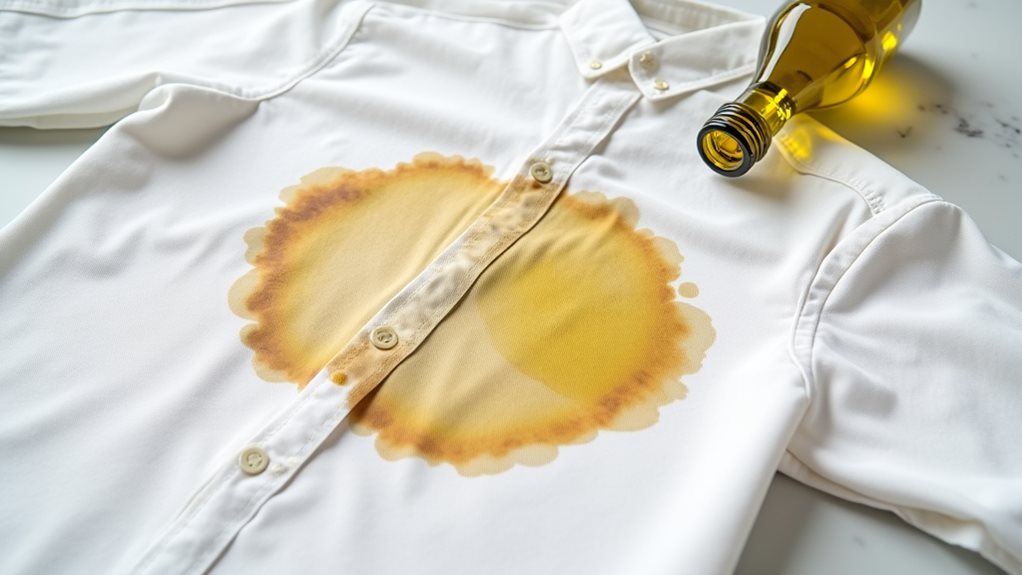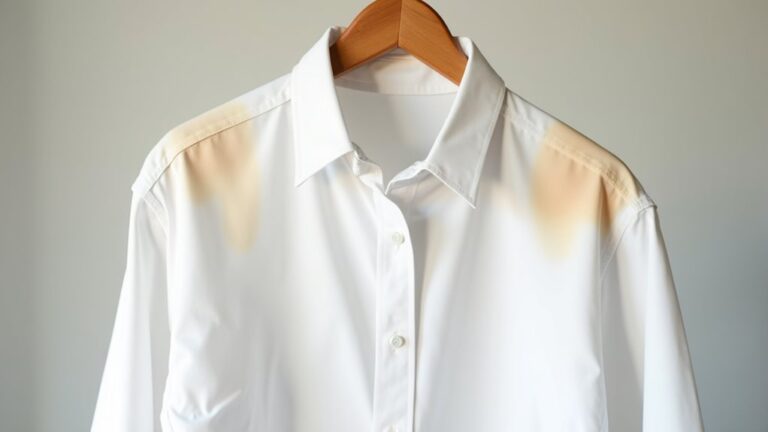Yes, dry cleaning can effectively remove most oil stains using powerful chemical solvents like perchloroethylene that dissolve greasy residues at the molecular level—something your regular washing machine simply can’t accomplish. Fresh oil stains have about a 90% success rate, though older stains may only lighten rather than disappear completely. The key is acting quickly and avoiding water, which actually sets oil deeper into fabric fibers, making removal nearly impossible. Understanding the process helps you get better results.
How Dry Cleaning Effectively Removes Oil Stains
When I first discovered the magic of dry cleaning after ruining my favorite silk blouse with a stubborn olive oil stain, I learned that professional dry cleaners don’t just wave a wand and hope for the best – they actually use sophisticated, solvent-based cleaning agents like perchloroethylene that work completely differently from your home washing machine.
Professional dry cleaners use sophisticated solvent-based cleaning agents like perchloroethylene that work completely differently from your home washing machine.
Here’s what makes dry cleaning so effective for oil stains: these specialized solvents dissolve greasy stains that water-based detergents can’t touch, while pre-treating stains guarantees deep penetration into fabric fibers without compromising fabric integrity.
Unlike traditional laundering, which can actually set oil deeper into delicate fabrics, professional dry cleaners use hydrocarbon solvents that safely extract stubborn stains.
However, dry cleaning has certain limitations with water-based stains like sweat or blood, making it most effective specifically for oil and grease-based stains.
Quick treatment dramatically improves your chances of complete removal!
Types of Solvents Used for Oil Stain Removal
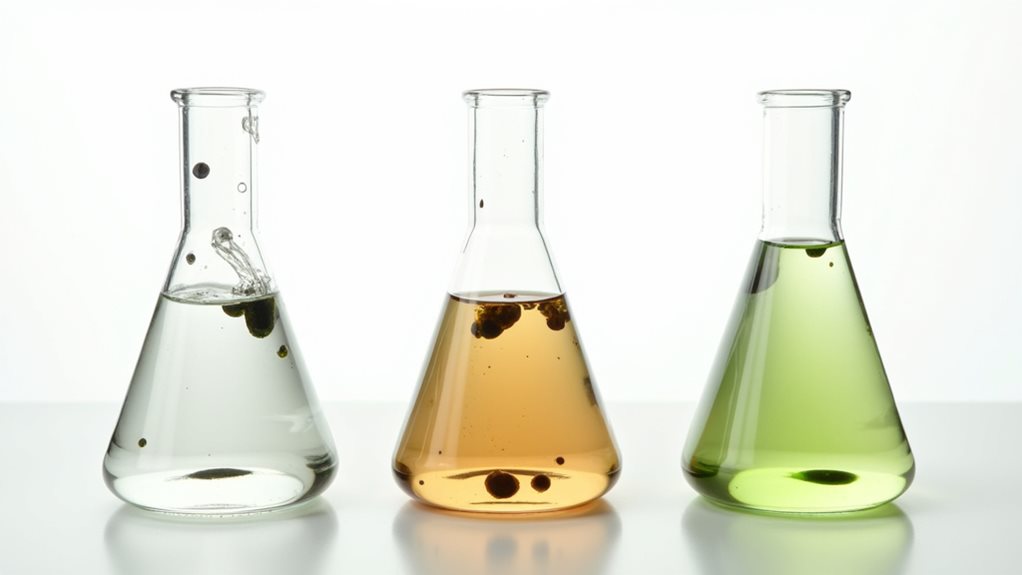
Professional dry cleaners rely on two main types of solvents to tackle those pesky oil stains, and understanding which one your cleaner uses can help you feel more confident about entrusting them with your most treasured garments.
Perchloroethylene, commonly called “Perc,” serves as the heavy-duty champion for stubborn stains and grease residues, breaking down oil molecules with impressive efficiency.
Meanwhile, hydrocarbon solvents offer a gentler approach, making them perfect cleaning agents for delicate fabrics like your grandmother’s silk blouse or that cashmere sweater you splurged on.
These dry cleaning solvents work at the molecular level for superior stain removal, preserving fabric integrity while eliminating oils that would otherwise laugh at water-based methods 😊.
Additionally, some environmentally conscious cleaners now offer GreenEarth silicone-based solutions that provide effective oil removal while addressing health and environmental concerns associated with traditional solvents.
Why Oil Stains Are Challenging for Regular Washing
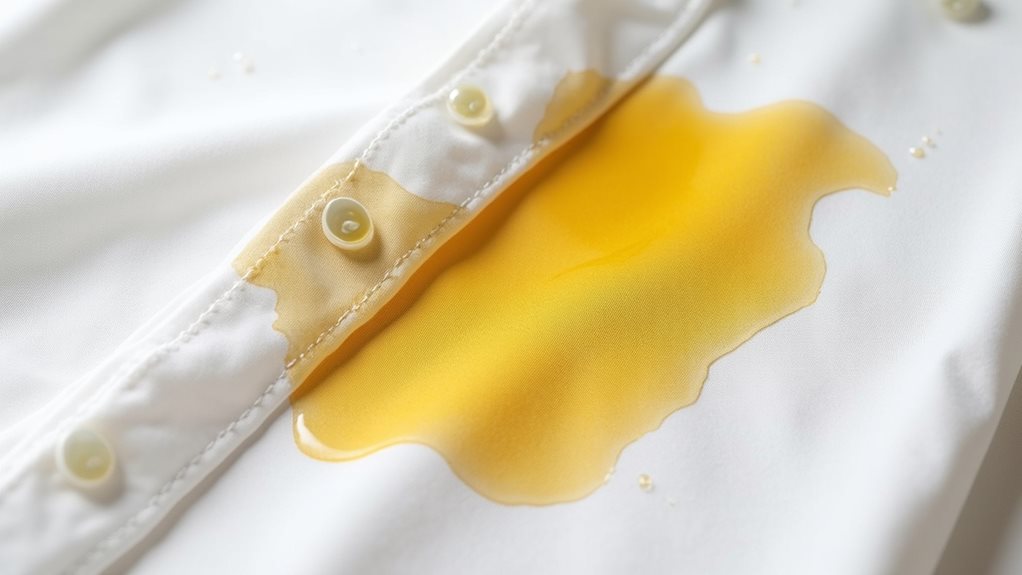
Because oil and water fundamentally oppose each other at the molecular level, your favorite shirt becomes a battlefield where traditional washing methods are destined to wave the white flag in defeat.
Here’s why regular washing struggles with oil stains:
- Water repulsion – Oil’s lipid-based structure actively resists water penetration, making standard detergents practically useless against stubborn grease.
- Heat backfire – Hot water actually strengthens chemical bonds between oil and delicate fibers, creating permanent damage to fabric integrity.
- Insufficient solvents – Regular detergents lack specialized compounds needed for effective removal of oil-based stains.
I’ve watched countless people frantically scrub oil stains, only to make them worse 😅.
Professional dry cleaning uses targeted solvents that dissolve grease without the water-versus-oil battle, protecting your garments while achieving real results. This chemical solvent approach makes dry cleaning particularly effective for oil-based stains that regular washing cannot handle.
When to Seek Professional Treatment for Oil Stains

The moment you notice that telltale dark spot spreading across your favorite blazer, your internal clock should start ticking, because timing becomes your most valuable ally in the fight against oil stains.
Here’s the truth I’ve learned through countless wardrobe mishaps: immediate action isn’t just helpful—it’s absolutely critical for successful stain removal methods.
Whether you’re dealing with cooking oil from that messy lunch or oil-based cosmetics from your morning routine, professional treatment through dry cleaning offers your best shot at preserving fabric integrity.
Don’t attempt home remedies with water; they’ll actually push the stain deeper into the fibers.
Instead, rush to your trusted dry cleaner, explain exactly what caused the stain, and let their specialized solvents work their magic on proper garment care.
Dry cleaning excels at removing oil-based stains because it uses chemical solvents instead of water to dissolve grease and oils that water-based cleaning simply cannot tackle.
Limitations and Realistic Expectations for Oil Stain Removal
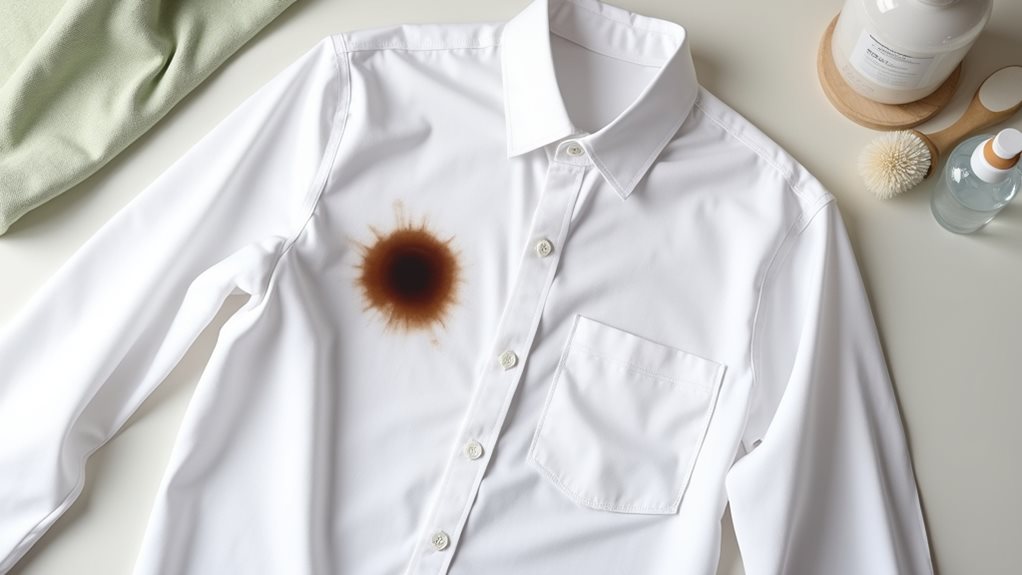
You’ll want to temper your expectations when it comes to oil stain removal, because honestly, I’ve learned the hard way that time isn’t always on your side – the longer that greasy spot sits there laughing at you, the more it bonds with your fabric fibers like an unwelcome houseguest who just won’t leave.
While dry cleaning works miracles on fresh spills, older stains become stubborn little rebels that might only lighten instead of disappearing completely, and certain delicate fabrics can actually suffer damage during aggressive treatment attempts.
Think of it this way: your silk blouse deserves gentle care, not a chemical wrestling match that could leave you with a stain-free but structurally compromised garment that falls apart faster than my New Year’s resolutions 😅.
The chemical solvents used in dry cleaning are specifically designed to dissolve grease and oil-based stains without the mechanical scrubbing action that water-based washing relies on.
Age Affects Success Rates
When I discovered that month-old marinara sauce stain on my favorite silk blouse last spring, I learned the hard truth about timing and oil stain removal – age isn’t just a number when it comes to your clothes.
The longer oil stains sit, the deeper they penetrate fabric fibers, creating bonds that even professional cleaners struggle to break. Your success rate drops dramatically as weeks pass, turning what could’ve been a simple fix into a challenging restoration project.
Here’s what impacts your chances:
- Fresh stains (0-24 hours): Dry cleaning solvents work like magic, achieving nearly 90% success rates.
- Week-old stains: Success drops to about 60%, requiring specialized treatment approaches.
- Set-in stains (months old): Often only lightened, not eliminated completely.
Some stains may become permanent when they’ve been heat-set through washing or drying, making even professional treatment ineffective regardless of the cleaning method used.
Always provide detail information about the stain’s age – it helps professionals choose the right battle strategy!
Fabric Damage Risks
Although dry cleaning works wonders on most oil stains, I’ve watched too many friends learn the hard way that even professional treatments can’t always save your clothes without consequences.
That silk blouse you treasure? The solvents used in dry cleaning can sometimes cause fabric damage, especially with delicate materials that weren’t meant to handle harsh chemicals.
Even experienced professionals face tough choices—they’ll often use gentler techniques to prevent irreversible fiber damage, which means your stain removal might only lighten the spot rather than eliminate it completely.
The key is quick treatment and honest communication with your cleaner about fabric type, because choosing the appropriate treatment method means balancing effectiveness with preservation 😊.
Heavily soiled garments with oil-based stains are actually among the items that should be avoided for dry cleaning, as the harsh chemical solvents can cause shrinkage, color bleeding, or complete destruction of certain materials.
Tips to Maximize Success Before Taking Items to Dry Cleaners
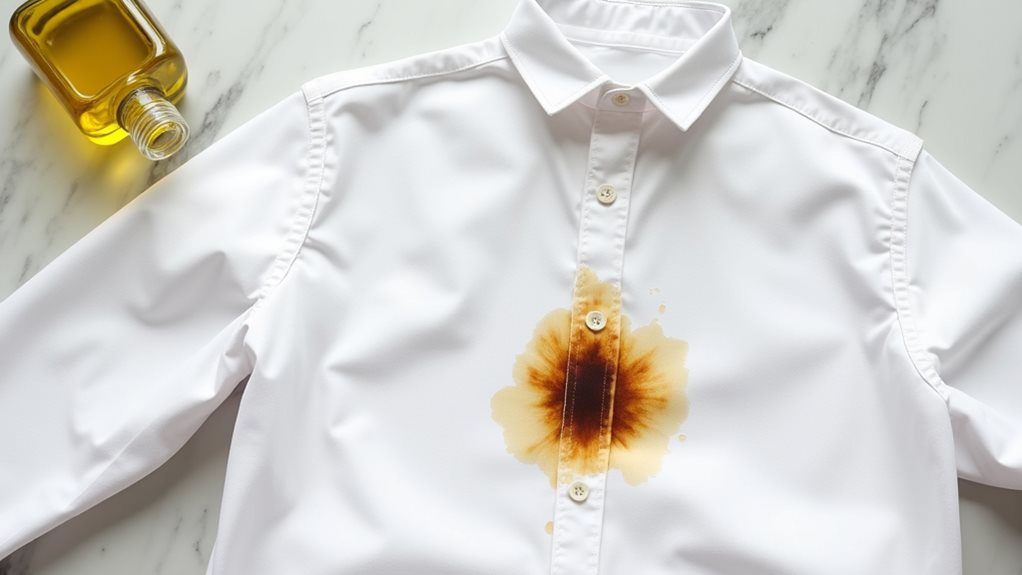
Why do some oil stains disappear completely at the dry cleaner while others leave behind stubborn reminders of that unfortunate encounter with salad dressing? The secret lies in what you do before professional dry cleaning takes over.
Here’s how to maximize your chances of successful removal:
- Act immediately – Time is your best friend when it comes to oil stains, so don’t let that olive oil marinate in your favorite shirt overnight.
- Blot the oil stain gently – Use a clean cloth to absorb excess oil without spreading it further, because rubbing only makes things worse (trust me on this one 😅).
- Avoid using water – Water sets oil deeper into fabric fibers, making your dry cleaner’s job much harder.
Professional dry cleaners use chemical solvents like perchloroethylene that can break down these hydrophobic oil materials at the molecular level, which is why proper preparation is so crucial for optimal results.
When you visit your dry cleaner for stain removal, provide detailed information about the oil type and timing to help them choose the best cleaning stain removal methods.

